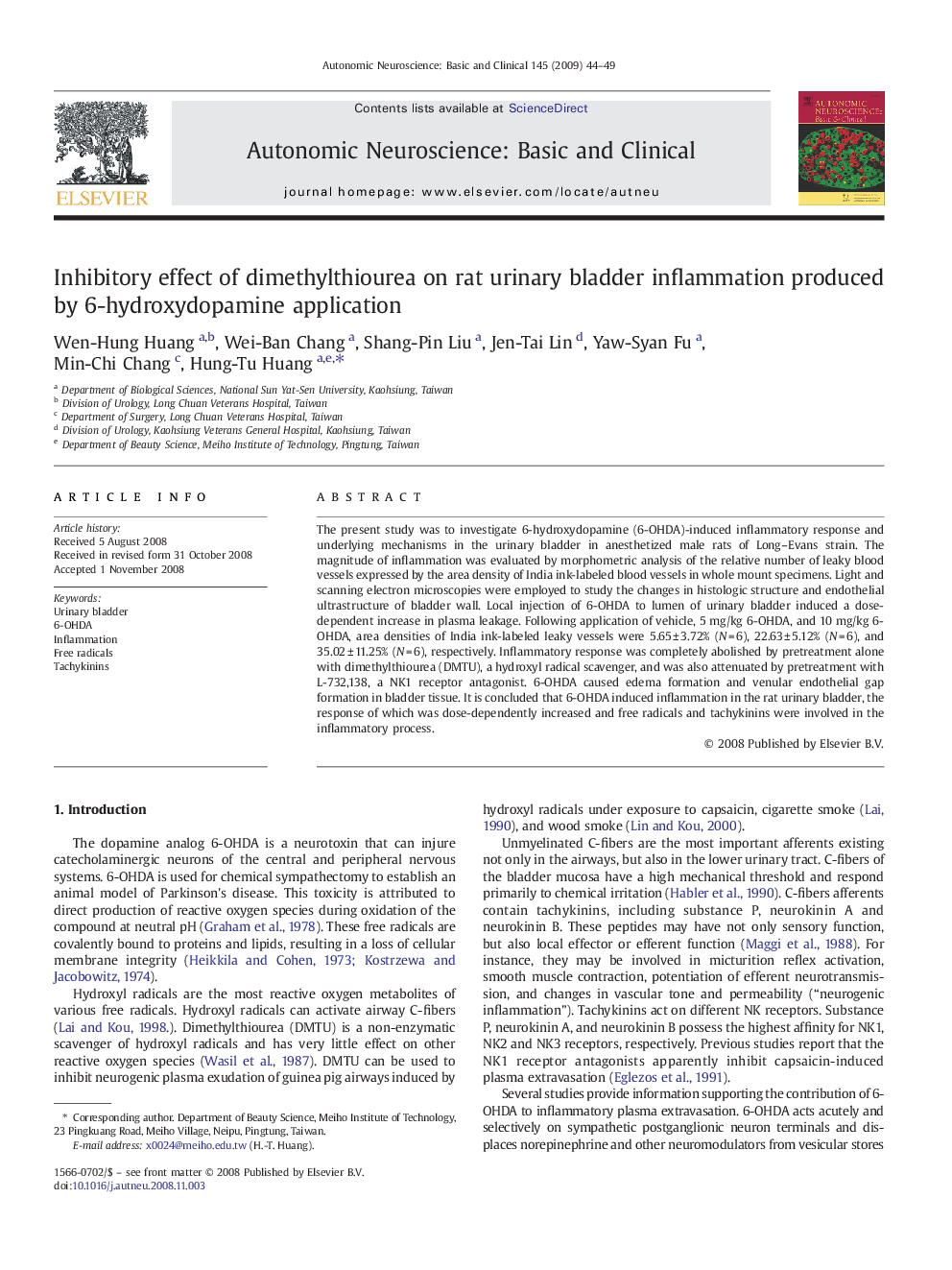| کد مقاله | کد نشریه | سال انتشار | مقاله انگلیسی | نسخه تمام متن |
|---|---|---|---|---|
| 3035410 | 1579566 | 2009 | 6 صفحه PDF | دانلود رایگان |

The present study was to investigate 6-hydroxydopamine (6-OHDA)-induced inflammatory response and underlying mechanisms in the urinary bladder in anesthetized male rats of Long–Evans strain. The magnitude of inflammation was evaluated by morphometric analysis of the relative number of leaky blood vessels expressed by the area density of India ink-labeled blood vessels in whole mount specimens. Light and scanning electron microscopies were employed to study the changes in histologic structure and endothelial ultrastructure of bladder wall. Local injection of 6-OHDA to lumen of urinary bladder induced a dose-dependent increase in plasma leakage. Following application of vehicle, 5 mg/kg 6-OHDA, and 10 mg/kg 6-OHDA, area densities of India ink-labeled leaky vessels were 5.65 ± 3.72% (N = 6), 22.63 ± 5.12% (N = 6), and 35.02 ± 11.25% (N = 6), respectively. Inflammatory response was completely abolished by pretreatment alone with dimethylthiourea (DMTU), a hydroxyl radical scavenger, and was also attenuated by pretreatment with L-732,138, a NK1 receptor antagonist. 6-OHDA caused edema formation and venular endothelial gap formation in bladder tissue. It is concluded that 6-OHDA induced inflammation in the rat urinary bladder, the response of which was dose-dependently increased and free radicals and tachykinins were involved in the inflammatory process.
Journal: Autonomic Neuroscience - Volume 145, Issues 1–2, 28 January 2009, Pages 44–49